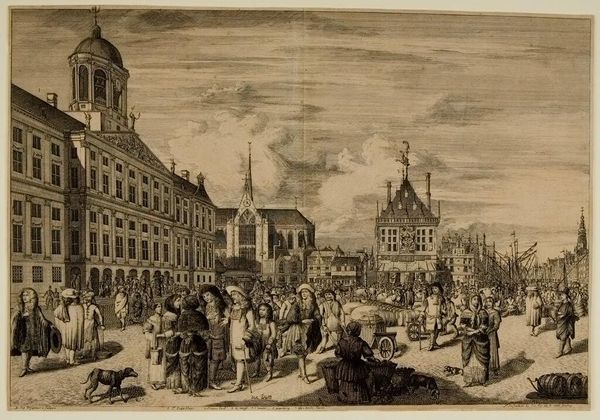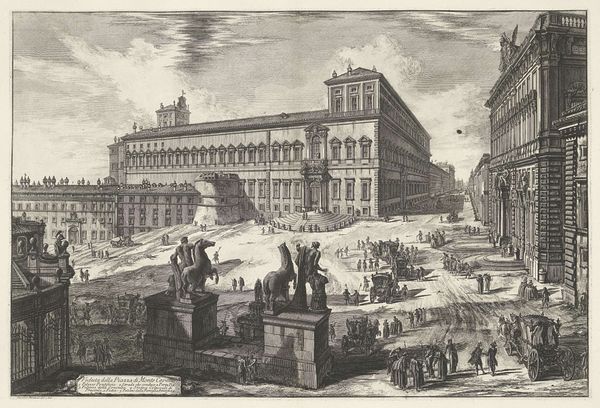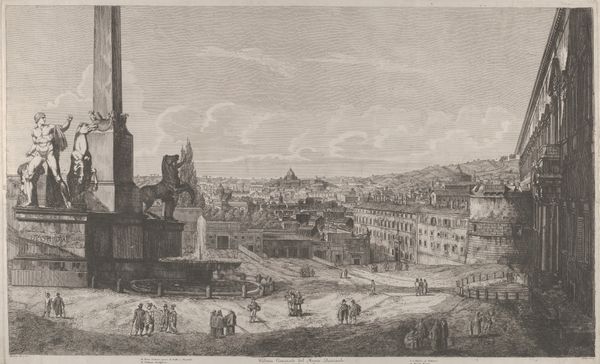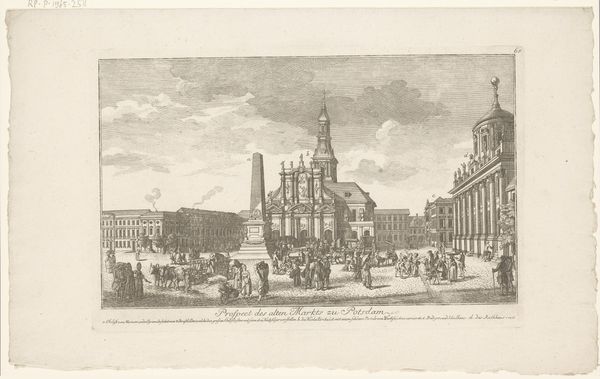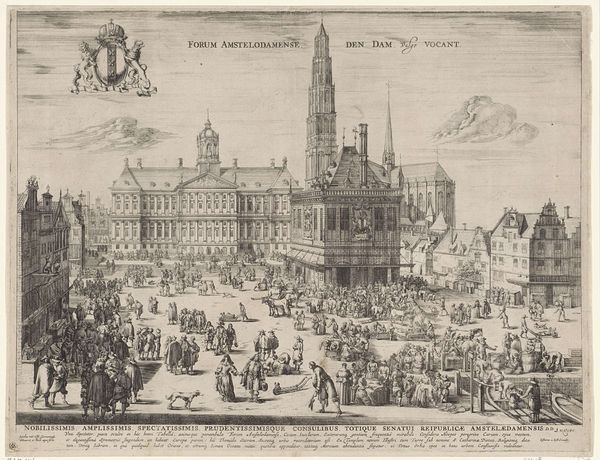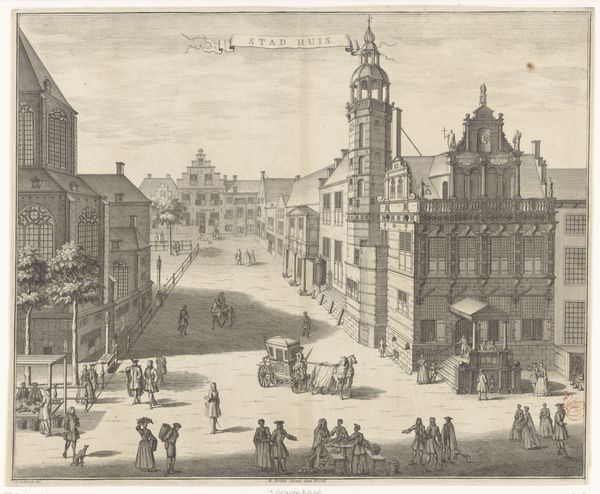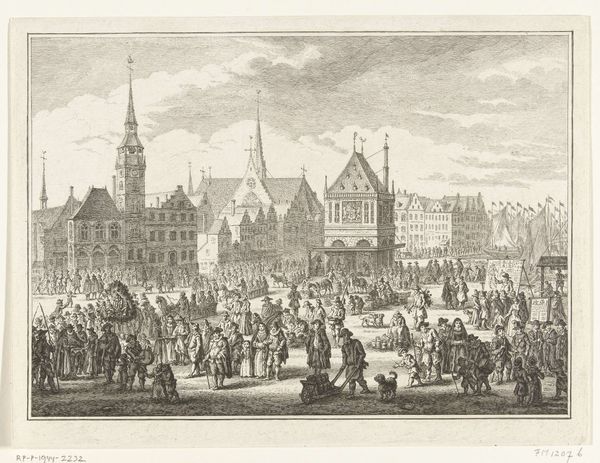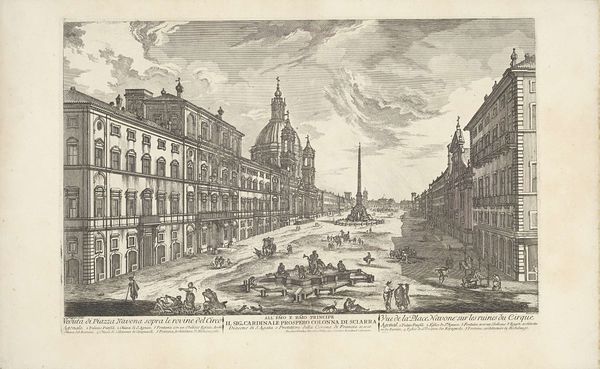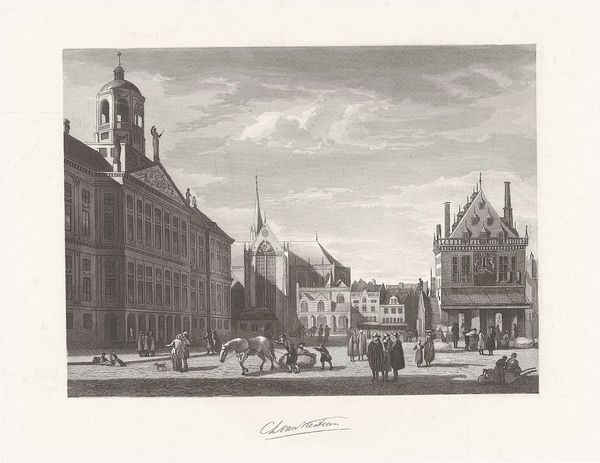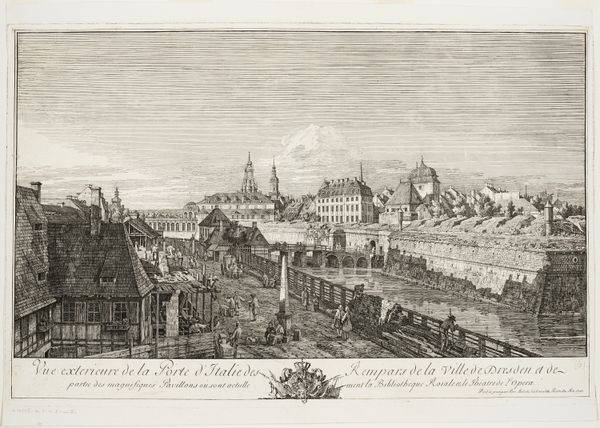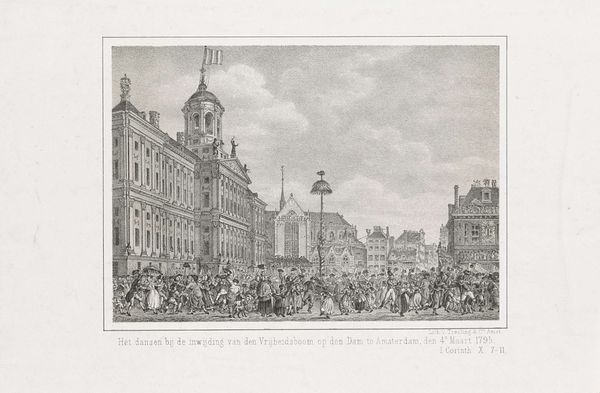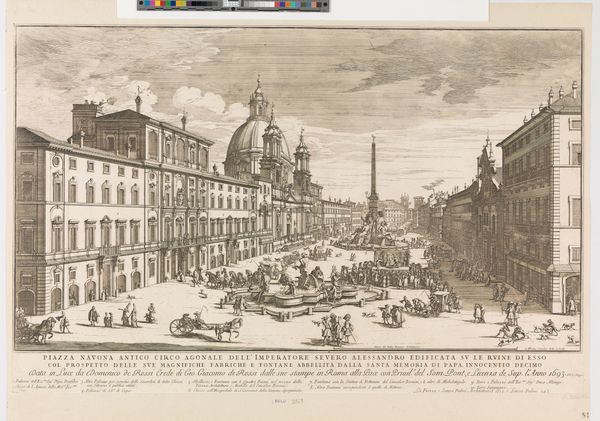
print, engraving
#
portrait
#
dutch-golden-age
# print
#
group-portraits
#
line
#
cityscape
#
history-painting
#
engraving
#
realism
Dimensions: height 362 mm, width 525 mm
Copyright: Rijks Museum: Open Domain
Editor: Here we have Johannes Kip's "Dam in Amsterdam," created sometime between 1685 and 1690. It’s a print, and immediately what strikes me is how bustling it is, how alive. What do you make of this depiction of Amsterdam, its architecture and all its people? Curator: I see a constructed world, teeming with signs and symbols of civic identity. Consider the buildings themselves: The New Church represents spiritual life, the Town Hall signifies civic administration and justice, while the bustling market alludes to trade, the very lifeblood of Amsterdam. Editor: That's interesting; I was so focused on the figures in the foreground that I overlooked how deliberately arranged the buildings seem. What do all these people represent? Curator: Precisely. Think of them as more than just everyday citizens. Look at their postures, clothing; they're performative. Each one embodies a facet of Amsterdam's social and economic fabric, much like actors on a stage. The image functions almost like a "how to read" Amsterdam. Editor: So, it's like a carefully curated representation of the city’s self-image, intended for public consumption? Curator: Absolutely. Ask yourself, who was the audience? Why was it important to project this image of prosperity, piety, and civic pride? Notice the clean, organized depiction – a contrast, perhaps, to the less controlled realities of city life at the time. Editor: I never thought about it that way! I appreciate your pointing out the symbolic weight of both the built environment and the people within it. This image seems much richer now. Curator: And I see that its symbols have retained their power to evoke and teach across centuries, haven't they? A conversation well begun!
Comments
No comments
Be the first to comment and join the conversation on the ultimate creative platform.
